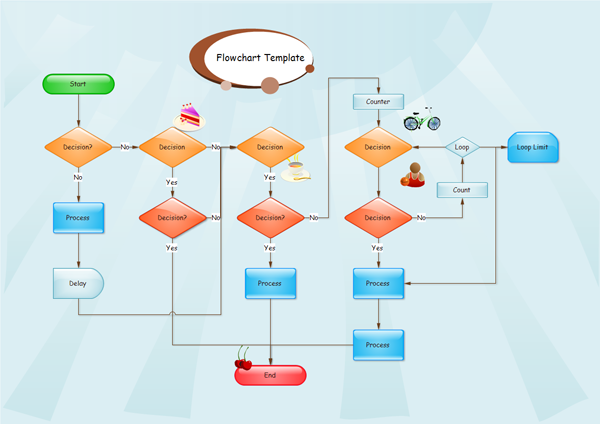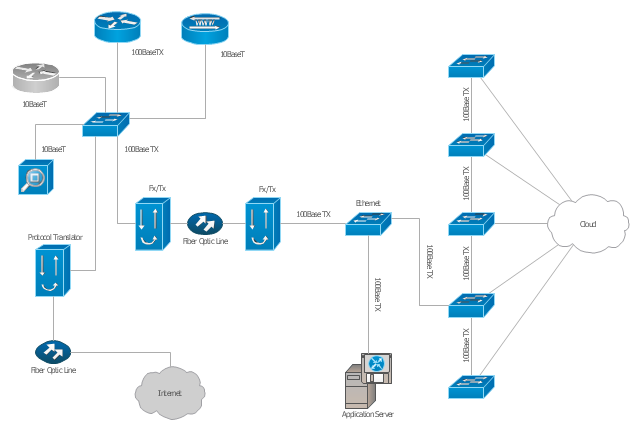
- Creative Flow Chart Elegant Basic Flowcharts In Microsoft Fice For Mac Pro
- Creative Flow Chart Elegant Basic Flowcharts In Microsoft Fice For Mac Free
Last updated: September 2018 Applicable to: Word, PowerPoint 2019, 2016, 2013, 2010; Windows and MAC OSX. Here’s a question we received: I am working on a report for my business manager, in which i would like to describe a simple process flow. I have saw some examples online. I guess my question is whether i can use Microsoft PowerPoint or Word to create my chart and then add it to the report. I understand that Microsoft has a software named Visio that focuses on charts?
You could also start with a flowchart template The Best Flowchart Templates for Microsoft Office The Best Flowchart Templates for Microsoft Office Flowcharts visualize processes. We have compiled the best flowchart templates for Microsoft Office, including Word, Excel, and PowerPoint. Jun 25, 2004 - Sample flowchart: mezzoblue.com. It's a very simple outlining program, but I love it for that and it's something I use all the time. Many people of an artistic bent believe that formality and process is an impediment to creativity. It is not cross platform compatable like MS Office for the Mac and MS Office for.

Usually,the best way to describe complex business processes in a document or presentation is to use flow charts (rather than numbered lists for example). Similarly, flowcharts are great to visualize decision processing. When working with Microsoft Office applications, and more specifically with Word, Excel, and PowerPoint, you are able to use the Smart Art Graphics template library in order to easily make flow chart diagrams by re-using predefined templates that ship as part of the Office suite.
Inserting flow diagrams into Word, PowerPoint and Excel Here’s the detailed walk-through process, which i would like to showcase using Word 2016, although it’s fully applicable to Office 2010, 2013 and 2019 Microsoft Office versions. Navigate to the place in your Word document into which you would like to insert your process chart. Hit Insert and select Smart Art. Choose the Process section and select a specific flowchart template.
As an example, we have selected a continuous block process. Next, hit OK. Using the Smart Art pane in the left hand side, assign a name to each of the diagram steps. Note that you are able to define additional steps as needed.
Once done, you might want to use the Design tab functions to change the color or design of your flow chart as well as customize your selected design as needed using the Format tab. As mentioned, you can use the process we just outlined in order to insert flowcharts in PowerPoint presentations and Excel spreadsheets. Inserting Visio flow charts Microsoft Visio, is probably the best and most complete tool for charting included in the Microsoft Office suite. If you have access to Visio, you can use it in order to create professional looking diagrams which you can then embed into Word, Excel and PowerPoint as flow charts. More details can be found in. Creating flow charts with VBA Couple of readers asked whether it’s possible to make embedded flow charts (or other diagrams) by using user or programmatically using Visual basic procedures.
The answer is yes, and we’ll cover that soon in other post that will be linked from here. In case of any question, feel free to leave as a comment.
There are many dedicated programs that only do flowcharts, and even Microsoft creates another program called Visio that’s more flowchart savvy than mainstream Microsoft Office programs – even then, we highly recommend that you create your flowcharts within your Office program such as Word, Excel, and PowerPoint! Why do we put forth such a recommendation? That’s because Microsoft Office programs already have all the abilities and options you need to create almost any type of flowchart you need – what’s more, you don’t have to buy and learn yet another program to do something that really is so simple! Actually, adding a flowchart within a Microsoft Office program is as simple as adding a few shapes – we will use Microsoft PowerPoint in this example but you could really be using Word or Excel to do the same task – even the options you will encounter are the same.
If you already need to create a flowchart in Word, Excel, or PowerPoint – then the choice has already been made for you! Alternatively, here are some thoughts that will help you decide which of these three programs work best for your flowcharts:. Word is great for simple flowcharts with few shapes as long as they all fit within the page constraints of Word. PowerPoint has similar slide constraints like Word’s page constraints – but for larger flowcharts, you can use PowerPoint’s hyperlinking options that let you spread the same flowchart over multiple slides. Excel’s large screen real estate within each worksheet does make it a great home for detailed or complicated flowcharts. Follow these steps to get started:.
Let’s start with a blank, new slide that just has a slide title and nothing else, as shown in Figure 1, below. If you are using Word, just substitute the blank slide area with a blank area on your document – Excel users can similarly use an available, blank range of cells in their worksheet. Figure 1: Empty slide with a title.
In PowerPoint, Word, or Excel – access the Insert tab of the Ribbon and click the Shapes button – this will bring up the Shapes drop-down gallery that you see in Figure 2. Figure 2: Shapes drop-down gallery. Within the Shapes gallery, you will find plenty of shapes that are arranged in various categories.
To create flowcharts, only two of these categories matter to you – these are the Flowchart and Lines categories, highlighted in red and blue respectively within Figure 2, above. Let us now explore various shapes available within these categories – first let us explore the Flowchart category. There are 28 flowcharting shapes available here – hover your cursor over any of these shapes to see a tool tip that provides you with the name/description of the hovered shape (see Figure 3, below). Figure 3: Flowchart shapes are described within the tool tips you see. Note: Want to know more about all the flowchart shapes?
Look at our page. Now select the Terminator shape within the Shapes gallery (see Figure 4). Figure 4: Select the Terminator shape.
Your cursor will turn into a crosshair – drag and draw on your slide, document, or worksheet to place an instance of the terminator, as shown in Figure 5, below. Figure 5: Place a Terminator shape to start your flowchart.
Creative Flow Chart Elegant Basic Flowcharts In Microsoft Fice For Mac Pro
With your terminator shape still selected, start typing (we just typed “Start”). Anything you type shows up within the flowchart shape, as shown in Figure 6, below.
Figure 6: Text within your flowchart shape. Now add a shape to represent a decision. Choose the Decision (Diamond) shape option from the Flowchart category within the Shapes gallery – then drag and draw to place an instance of the shape on your slide (or document / sheet) – then type in some text – we just typed “Are you happy?”, as shown in Figure 7, below. Figure 7: Text that makes you happy?. We now need to link the Terminator shape to the Decision shape using a “connector” – to do so, access the Shapes gallery (see Figure 2) and select the second option within the Lines category (see Figure 8, below). This shape is a connector that has an arrowhead at one end. We need the arrowhead end of the connector to be “connected” to your Decision shape – and the non-arrowhead end will emanate from the Terminator shape.
Creative Flow Chart Elegant Basic Flowcharts In Microsoft Fice For Mac Free
We won’t get into details about how connectors work in this tutorial – you can learn more about connectors in our tutorial. Figure 8: Choose a connector with an arrowhead. Figure 9 shows a connector that links both our shapes. To make sure that your connector indeed “connects”, select any shape, and hit any of the arrow keys on your keyboard to nudge the shape - you will find that the connector reorients according to the new position of your moved shape.
Figure 9: Shapes connected to each other. Similarly, add two more shapes that connect to your existing Decision shape, as shown in Figure 10, below.
We added a connected Process (rectangle) shape on the right and another connected Decision (diamond) shape at the bottom. Figure 10: More shapes added to the flowchart. As you can see within Figure 10, above – there are two options emanating from the “Are you happy?” decision shape. Decision shapes typically have more than one output emanating from them so as to create a decision – in this case, the decision will be based on whether the answer to the “Are you happy?” question is Yes or No. We therefore need to identify the two emanating connectors as Yes or No to make this flowchart sequence logical. To do that, you need to place text boxes with Yes and No captions next to the relevant connectors – this is explained in our tutorial.

Once you add Yes and No captions to your connectors, your flowchart will look similar to the one shown in Figure 11, below. Figure 11: Flowchart with Yes and No captions. Continue adding flowchart shapes and link them with connectors. Finally, you will need to add a 'Stop' Terminator shape to complete your flowchart, as shown in Figure 12, below. Figure 12: Complete Flowchart. Save your documents often!
